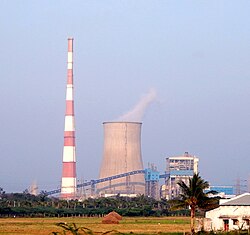 | |
Native name | Āndhra rāṣṭra eṇḍana utpati samasta |
|---|---|
| Company type | Public Sector Undertaking |
| Industry | Electricity generation |
| Founded | 1998 |
| Headquarters | , India |
Key people |
|
| Services | Electricity |
| Total assets | |
| Total equity | |
| Owner | Government of Andhra Pradesh |
Number of employees | 10,889 (2008) |
| Parent | Ministry of Energy, Government of Andhra Pradesh |
| Website | APGENCO official website |
The Andhra Pradesh Power Generation Corporation Limited (APPGCL) is power generating organization in Andhra Pradesh. It undertakes operation and maintenance of the power plants and also setting up new power projects alongside upgrading the project's capacity, [1] under the recommendations of Hittenbhayya committee setup by TDP Govt.



